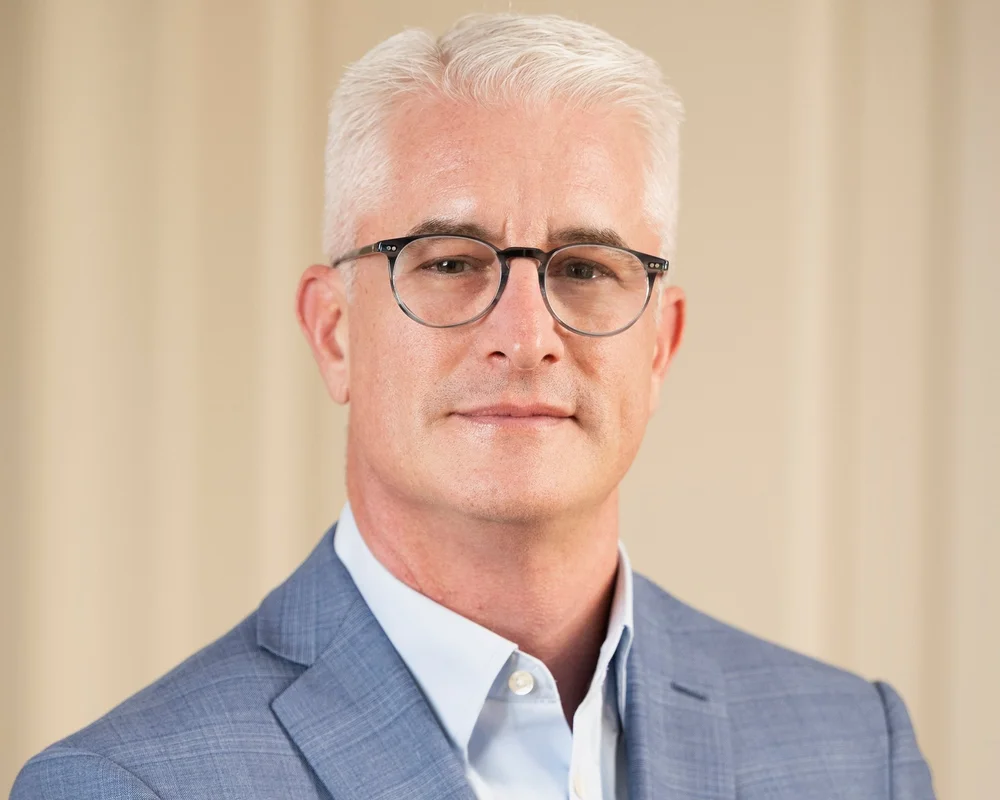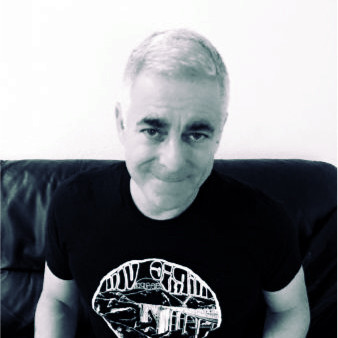 Global Crossing’s return to positive free cash flow over the past couple of years has had a lot to do with its improving performance in the North American large enterprise market. I had the opportunity to have a conversation with Neil Barua, who is Global Crossing’s Managing Director for North America. He began his tour with the company with Asia Global Crossing back in 2000, and has served in various executive roles since then. With no further ado, let’s dive into the Q&A:
Global Crossing’s return to positive free cash flow over the past couple of years has had a lot to do with its improving performance in the North American large enterprise market. I had the opportunity to have a conversation with Neil Barua, who is Global Crossing’s Managing Director for North America. He began his tour with the company with Asia Global Crossing back in 2000, and has served in various executive roles since then. With no further ado, let’s dive into the Q&A:
TR: You’re the Managing Director of the North American customer facing unit. Where does that fit inside Global Crossing as a whole? What markets do you focus on?
NB: Global Crossing has several customer facing units — one for LATAM, EMEA, Carrier, U.S. Federal and North America. I head the North America enterprise unit. We target the Fortune 2000 and up – enterprise customers within North America with domestic and, especially, global needs. That’s in the range of a $15k-$200k/month/customer. That’s a space where we don’t really see the big players, who mainly focus on competing for the largest accounts.
The North American eneterprise customer facing unit is the biggest contributor to total Invest and Grow (that part of Global Crossing that is focused on serving global enterprises and carrier customers, excluding wholesale voice) revenue for the company broadly. It is comprised of sales, support, offer management, access management, and, very importantly, service delivery. The benefit of organizing in customer facing units is that it gets you closer to the customer, and beyond taking the sales order for us, it is far more important to do the provisioning piece well. And that piece of it is now resident within the accountability of our unit, which puts everyone on the same page for what we need to do for the customer. And I think that’s leading to the growth we are seeing, and is the only way to capture market share — as we have been doing — in this space.
TR: How limited are Global Crossing’s target customers in North America to those with international bandwidth requirements? How do you address customers with primarily domestic needs?
NB: The perception of Global Crossing is ‘use them for global’, and, literally, if you’re looking for global, we’re getting nine of 10 calls. But within North America, although you might think the footprint for some of the competitors might be a bit stronger, in an owned asset standpoint, we have been winning domestic deals too, which has been a bit of a change over the past year and a half or two years. That normally wasn’t the case, we’d only win things that would have one international site and then we were in the game. Now, some of these customers are buying from us simply in the domestic space. Clearly, we want them to have a global site — that makes it more of a leverage point for us. But it’s not as if we’re out of the game with domestic players.
Some of that domestic success comes from our relationships with third parties. For instance, our MLB deal that provides stadium connectivity — that’s one where we had good success in part because of our ability to use third parties for access, but also if you look at the network map it’s not a skeleton network. It hits a lot of the major cities, and it’s just a matter of reaching the endpoint which we use these third parties for.
TR: One place that Global Crossing has always lagged other providers is in the depth of its metro access networks in North America. How do you approach the question of access operationally? Do you build out any metro loops?
NB: We’re doing a lot of work on continued access savings, i.e. continued expansion of our metro footprint through third parties so that we get good operational leverage from the revenue growth we have been seeing; and it’s flowing through to the bottom line of contribution margin.
For building metro loops, that is a business decision point we can contemplate making depending on where actually we need those deeper penetration and what the NPV looks like. That said, at the end of the day, to get a deeper footprint metro-wise you do the build versus buy decision and we look at that. But for us it is less about buying dark fiber, and more about leasing capabilities that we, quite frankly, don’t have in some of these markets on the metro side.
TR: Having fewer metro assets makes it harder to achieve higher margins, how do you compensate for that?
NB: We don’t break out North American enterprise margins, we just aggregate it within Rest-Of-World so you can’t really see the margins within our North American customer facing unit. But we feel good about continued ability to win deals irrespective of having owned metro assets in some of these cities.
We’re also not going for 10 sites in Atlanta as our target market. We’re really looking more at two sites in Atlanta, a few more sites in North America, maybe one in London and another in Latin America. That’s where we’ll compete.
TR: What role has Ethernet played in the growth of your North American business? How do you see it developing from here?
NB: Our VPLS EtherSphere products have been seeing considerable growth in the funnel of proposals, as well as in the closure of deals. They are one of the fastest growing areas of what we are winning, as well as quoting out to customers. This is not just North America, but globally.
In the large financial and the hi-tech and biotech areas, VPLS is being very much looked at, if not bought, right now. We’re really focused on the global side of this and we’ll also pick up simply domestic pieces like TTX, North America’s leading provider of railcars and related freight car management services, which we recently announced. Customers want the flexibility of bandwidth, as well as cost advantages from Ethernet — that dialog is becoming more and more rampant.
It is an area where we continue to put emphasis. There’s a lot of focus on lowering interval times, in terms of once you get the order on Ethernet with the handoffs to the carriers to extend or to narrow down the interval until billing.
TR: There has been a surge in M&A activity amongst fiber providers this year. Are there assets out there that Global Crossing might be pursuing?
NB: I’m the nuts and bolts guy that executes the business plan. I leave the actual M&A to the corporate development side. But at the end of the day, it is the expansion of our access footprint, i.e. deeper penetration into some of the metro networks to give us capillarity and greater access leverage, and possibly augmenting some of the capabilities we can put on our own network. Those are clearly things that would be exciting from my perspective on M&A.
TR: How does Global Crossing address the rapidly growing interest in low latency connectivity for high frequency trading and other applications?
NB: It’s a big market. A year ago it was milliseconds, now it’s microseconds. In a year or two it will be nanoseconds. Our AC-1 South is the fastest path across the Atlantic, and we’re making sure we leverage that asset as best as possible. It’s very much taking business on that route, with price points that are pretty staggering due to the amount of profits these companies are making. Additionally, we’re very well competitively placed for Latin America, which seems to be another growing market for high-frequency trading.
TR: How does Hibernia Atlantic’s announcement of a new lower latency transatlantic cable build affect Global Crossing’s plans?
NB: Hibernia’s announcement of a possible new transatlantic cable shows the growing demand in this area. Today, Global Crossing has diverse transatlantic cable options that include three major crossings, AC-1 North, AC-1 South and AC-2. Global Crossing’s AC-1 South route has speeds of 58.2ms from Brookhaven, NY, to Whitesands in the UK. We build our routes using a combination of criteria that includes the shortest route, a path which provides the best potential for a safe and secure route and diversity, and network resiliency options for our customers.
TR: How important is Global Crossing’s conferencing product line to its North American market presence?
NB: That’s an area we have been strong market demand for our services. It’s more than $100M in revenue that we are seeing continued growth in, especially in the larger Fortune 50 to 100 customers that do a lot of audio conferencing. They’re looking to us on that front, and conferencing is a great lead in for us into those largest accounts.
TR: What about telepresence?
NB: For the last 16-18 months, telepresence has been a dominant topic in discussions with our customers. I was surprised just how many wallets opened up, especially in 2009, to buy telepresence at the cost levels they were at then. We are reselling Teliris’s services and are the undercarriage for their customers, as well. Ultimately for us it’s great traffic growth at really good margins. These decisions are being made at C-level executives and they just like the fact that they don’t have to fly to Mumbai to go to a meeting and don’t care as much what the cost is. It’s different than some of the arm-to-arm combat in the rest of the spaces we target where there’s a lot of competition.
TR: With organic growth comes hiring, in what areas is the North American unit bringing in personnel?
NB: Percentagewise, sales is highest. But we’ve been hiring in access — more people focused on getting better leverage from third-party providers. We’ve also been hiring a lot in client services — I’m a big believer that if you hire sales people, you must put the support behind them. And service delivery is where I put a lot of focus. It’s definitely been across the board.
TR: Thank you for talking with Telecom Ramblings!
If you haven't already, please take our Reader Survey! Just 3 questions to help us better understand who is reading Telecom Ramblings so we can serve you better!
Categories: Industry Spotlight · Internet Backbones






Hey, he looks like Sureal Choski’s brother. Do you have an interview on where Choski went that is coming down pike? tia
Having known Neil Barua personally for many
years, he is as genuine as he appears in this
interview.
Congratulations, Neil on your success
and well deserved recognition.